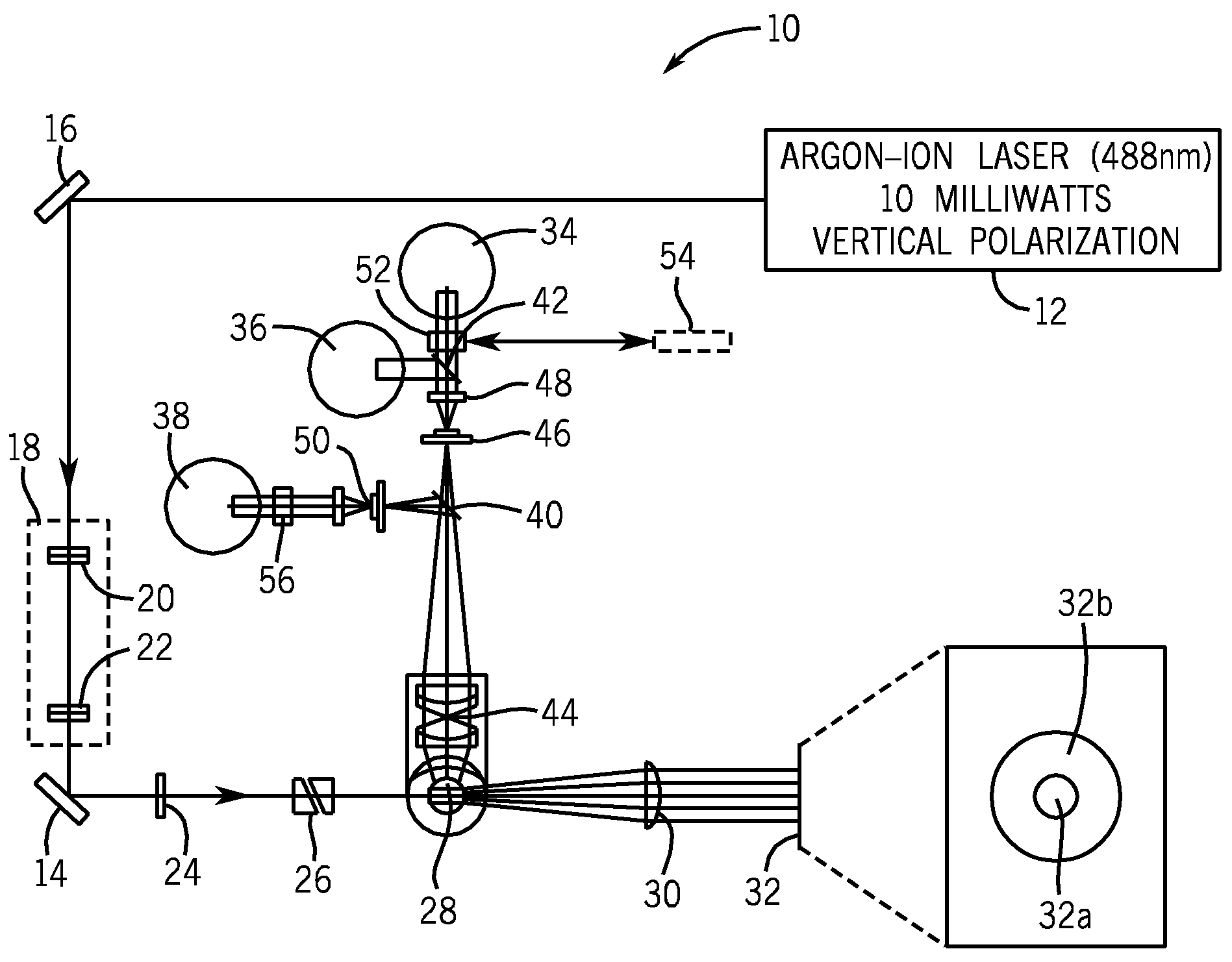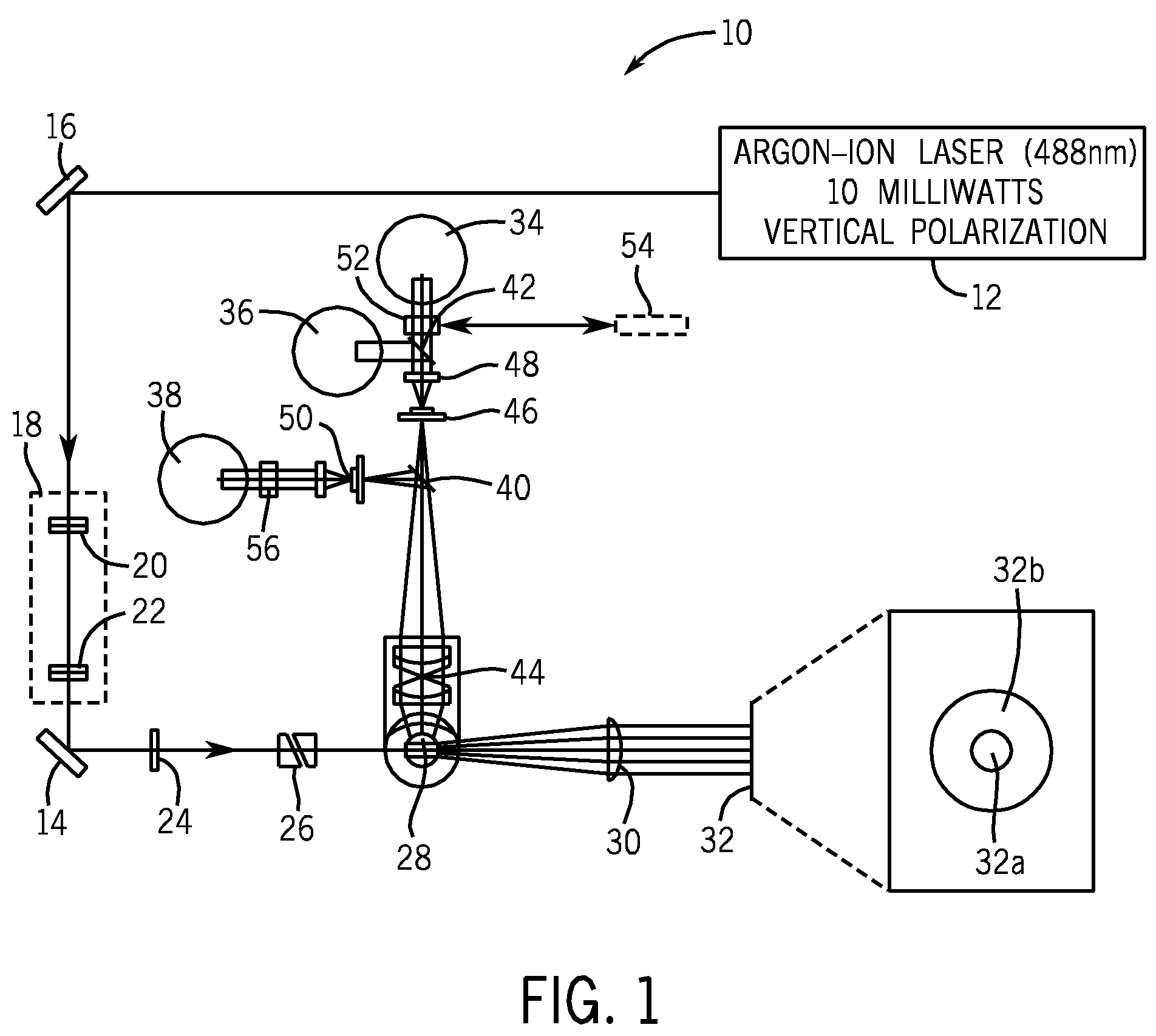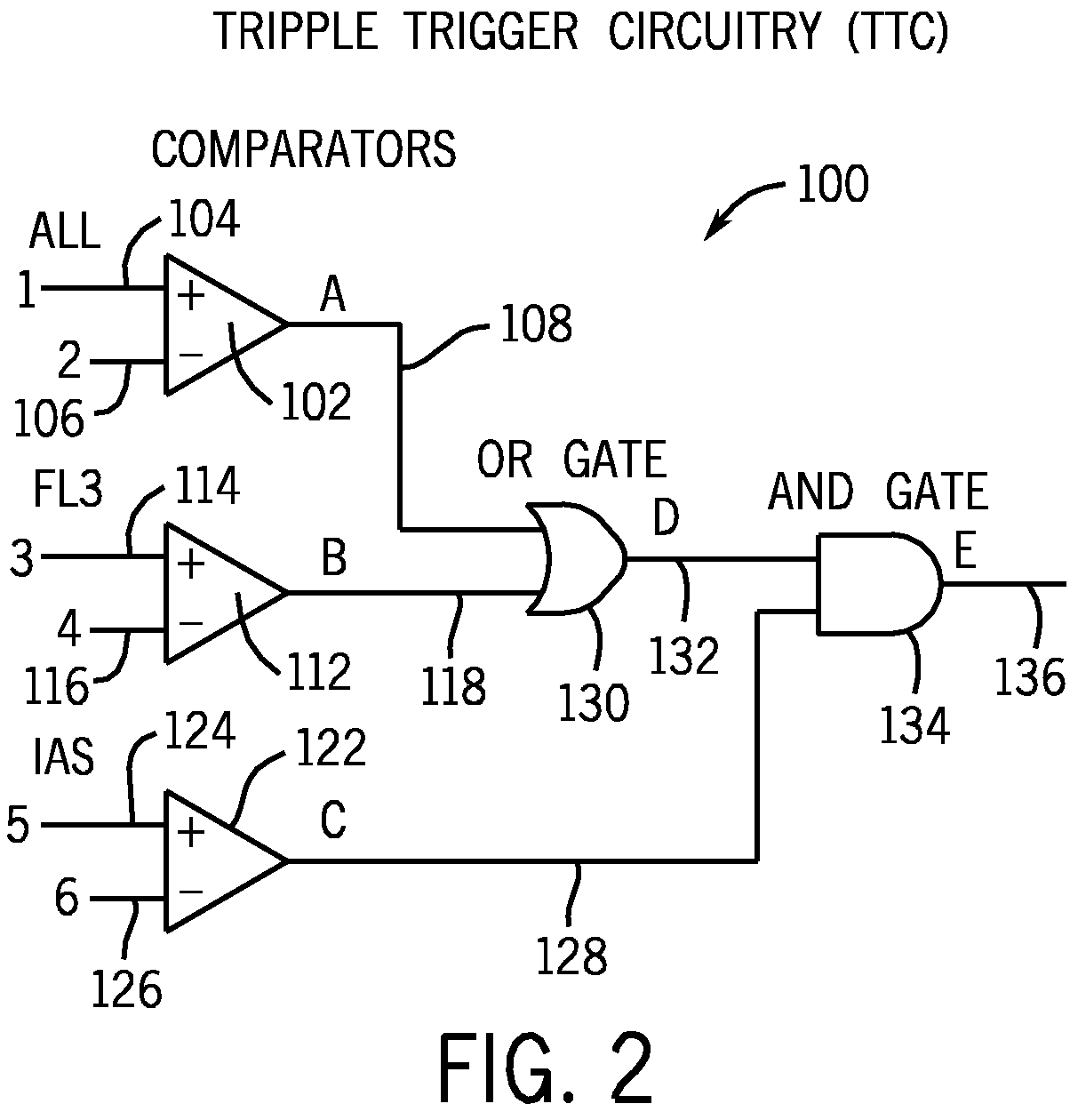Method for classifying and counting bacteria in body fluids
a technology of hematology analyzer and hematology sample, which is applied in the field of classifying and counting white blood cells, erythroblasts, bacteria in body fluids by means of an automated hematology analyzer, can solve the problem that most hematology analyzers are not capable of distinguishing signals generated by bacteria from other components of a sample of body fluid
- Summary
- Abstract
- Description
- Claims
- Application Information
AI Technical Summary
Benefits of technology
Problems solved by technology
Method used
Image
Examples
examples
[0083]Comparative Examples A, B, and C illustrate how cytograms resulting from the method described herein characterize white blood cells in an automated hematology analyzer described in U.S. Pat. Nos. 5,631,165; 5,656,499; and 5,939,326. Working Examples 1, 2, 3, 4, and 5 illustrate how cytograms resulting from the method described herein differentiate bacteria from white blood cells and count bacterial cells in an automated hematology analyzer described in U.S. Pat. Nos. 5,631,165; 5,656,499; and 5,939,326.
example 1
[0096]The same method and apparatus that were used in COMPARATIVE EXAMPLE A were used to carry out EXAMPLE 1.
[0097]FIG. 6A is a cytogram of a clinical sample of cerebrospinal fluid (CSF), not suspected of carrying any infection, wherein the X-axis corresponds to IAS signals and the Y-axis corresponds to ALL signals, as measured by the apparatus depicted in FIGS. 1 and 2. FIG. 6B is a cytogram of a clinical sample of the same CSF as in FIG. 6A, except that the X-axis corresponds to FL3 signals and the Y-axis corresponds to ALL signals, as measured by the same apparatus depicted in FIGS. 1 and 2. FIG. 6C is a cytogram of a clinical sample of the same CSF as in FIG. 6A, except that the X-axis corresponds to ALL signals and the Y-axis corresponds to PSS signals, as measured by the apparatus depicted in FIGS. 1 and 2. FIG. 6D is a cytogram of a clinical sample of the same CSF as in FIG. 6A, except that the signals are from the PLT channel, wherein the X-axis corresponds to IAS signals an...
example 2
[0098]The same method and apparatus that were used in COMPARATIVE EXAMPLE A were used to carry out EXAMPLE 2.
[0099]FIG. 7A is a cytogram of a clinical sample of CSF from a 56-year old female patient having a diagnosis of meningococcal sepsis. The X-axis corresponds to IAS signals and the Y-axis corresponds to ALL signals, as measured by the apparatus depicted in FIGS. 1 and 2.
[0100]The sample contains white blood cells at a concentration of 5.06×103 / μL, red blood cells at a concentration of 0.003×106 / μL, neutrophils (86.8%), lymphocytes (5.4%), and monocytes (5.4%).
[0101]FIG. 7B is a cytogram of a clinical sample from the same CSF as in FIG. 7A, except that the X-axis corresponds to FL3 signals and the Y-axis corresponds to ALL signals, as measured by the apparatus depicted in FIGS. 1 and 2. The points in the circle below ALL channel 25 at far right corner of the cytogram in FIG. 7B correspond to bacterial cells, whose DNA is brightly stained by the reagent system, described in U.S....
PUM
 Login to View More
Login to View More Abstract
Description
Claims
Application Information
 Login to View More
Login to View More - R&D
- Intellectual Property
- Life Sciences
- Materials
- Tech Scout
- Unparalleled Data Quality
- Higher Quality Content
- 60% Fewer Hallucinations
Browse by: Latest US Patents, China's latest patents, Technical Efficacy Thesaurus, Application Domain, Technology Topic, Popular Technical Reports.
© 2025 PatSnap. All rights reserved.Legal|Privacy policy|Modern Slavery Act Transparency Statement|Sitemap|About US| Contact US: help@patsnap.com



